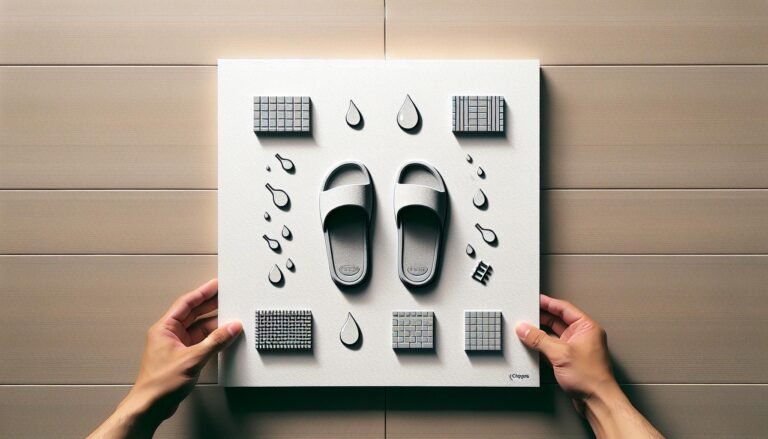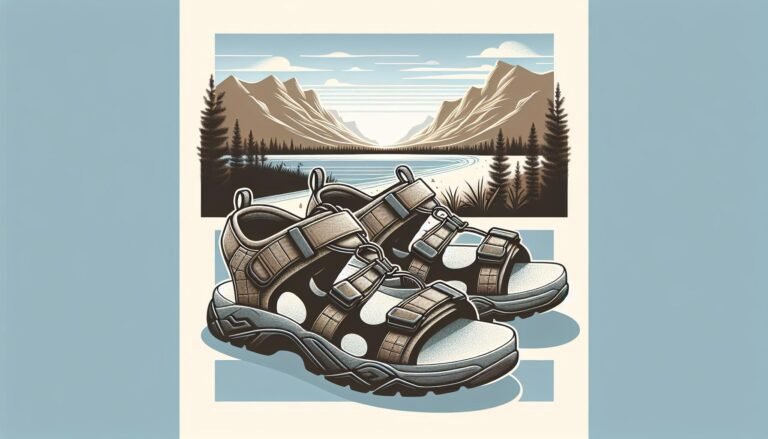What Do You Call Ballet Shoes? A Complete Guide to Different Types and Their Uses
Ballet, the timeless dance form known for its grace and precision, demands the perfect footwear to support its intricate movements. These specialized shoes, essential to every dancer’s performance, go by several names depending on their design and purpose. Whether you’re a seasoned dancer or just curious about the world of ballet, understanding the terminology can enhance your appreciation of this beautiful art.
From the soft, flexible flats worn in practice to the iconic pointe shoes that allow dancers to perform on their toes, each type of ballet shoe plays a crucial role. Knowing what to call these shoes isn’t just about vocabulary—it’s about recognizing the craftsmanship and tradition behind each pair. Dive into the world of ballet shoes and discover what makes them so unique.
Key Takeaways
- Different Types of Ballet Shoes: Ballet shoes are categorized mainly into soft ballet shoes (flats) and pointe shoes. Flats are also known as ballet slippers, ideal for beginners, while pointe shoes, or toe shoes, are for advanced dancers performing on their toes.
- Historical Evolution: Ballet shoes have evolved since the 16th century. Significant developments include the transition from heeled shoes to heelless shoes in the 18th century, and the 19th-century innovation of pointe shoes, which helped revolutionize ballet performance.
- Material and Fit: When choosing ballet shoes, the material (leather, canvas, satin) and fit are crucial. Properly fitted shoes enhance a dancer’s movements and comfort.
- Sole Types: Ballet shoes come with either full soles, which offer more support for beginners, or split soles, which provide greater flexibility for experienced dancers.
- Purchasing Options: Ballet shoes can be bought from physical stores, online retailers, specialty shops, or based on instructors’ recommendations. Each option offers benefits like personalized fitting or a wider selection.
- Maintenance Tips: Proper care is essential to prolong the life and performance of ballet shoes. Cleaning and maintaining both soft and pointe shoes regularly helps in preventing wear and ensuring safety.
Understanding Ballet Shoes
Different Names for Ballet Shoes
Ballet shoes, essential for dancers, go by various names depending on their type and use. The general term “ballet shoes” includes both soft “flats” and hard “pointe shoes.” Flats, known as “soft ballet shoes” or simply “ballet slippers,” accommodate beginners and those practicing foundational techniques. Pointe shoes, or “toe shoes,” are specialized footwear designed for advanced dancers performing en pointe, enabling them to dance on the tips of their toes.
The History of Ballet Shoes
The evolution of ballet shoes dates back to the 16th century in the French court. Initially, male dancers wore heeled shoes until the 18th century when Marie Camargo of the Paris Opera Ballet popularized heelless shoes, enhancing mobility. In the 19th century, Italian ballerina Marie Taglioni revolutionized pointe dancing by strengthening the toes of her slippers for her role in “La Sylphide.” This innovation led to the modern pointe shoe, with its stiff toe box and shank, facilitating en pointe technique and expanding the possibilities for ballet choreography.
Through these advancements, both flats and pointe shoes have become indispensable in the world of ballet, each serving a specific purpose in a dancer’s progression.
Types of Ballet Shoes
Soft Ballet Shoes
Soft ballet shoes, or flats, are the foundation of a dancer’s training. Made from materials like leather, canvas, or satin, these shoes provide flexibility and comfort. They feature a thin sole and split-sole design, enabling full articulation and connection to the floor. Soft ballet shoes come with either elastics on the top or ribbons, securing the shoe to the foot. Beginners and younger dancers often wear these shoes for practice and performance.
Pointe Shoes
Pointe shoes are designed for advanced dancers. Featuring a box, shank, and platform, these shoes allow dancers to perform en pointe. The box, made of layers of fabric, cardboard, and glue, supports the toes, while the shank, a stiff insole, offers arch support. Satin usually covers pointe shoes, adding a classic aesthetic. Dancers secure pointe shoes with ribbons and elastics, ensuring a snug fit. Proper preparation, including breaking in the shoes and padding the toes, is crucial.
Choosing the Right Ballet Shoes

Factors to Consider When Buying Ballet Shoes
Material and Fit. Ballet shoes come in leather, canvas, and satin. Each material provides different benefits. Leather shoes offer durability. Canvas shoes provide better breathability. Satin shoes are often used in performances for their sleek appearance. Fit is crucial. Shoes should hug the foot without causing discomfort. A well-fitted shoe allows a dancer to move freely.
Sole Type. Ballet shoes have either a full sole or a split sole. Full soles offer more support, ideal for beginners. Split soles allow greater flexibility and articulation, suited for advanced dancers. The type of sole impacts the dancer’s movement and technique.
Size and Shape. Ballet shoes need to fit like a second skin. Sizes vary among brands. Measuring the foot’s length and width ensures the correct size. Some shoes come in different shapes to accommodate various arch heights and foot widths. It’s essential to try on multiple pairs to find the best fit.
Where to Buy Ballet Shoes
Physical Stores. Ballet shoes can be found in dancewear stores, where dancers can try on different styles. Sales staff usually have expertise in fitting ballet shoes, offering personalized recommendations. Trying shoes in person helps ensure a proper fit and feel.
Online Retailers. Many online stores specialize in dancewear. They offer a wide range of brands and styles. While buying online, consider reading customer reviews and using size guides provided by the retailer. Some retailers offer free returns, making it easier to find the right fit.
Specialty Shops. Some brands have flagship stores or dedicated sections in larger retail stores. These specialty shops carry exclusive items and provide expert fittings. They may offer custom-made shoes for dancers with specific needs.
Instructors’ Recommendations. Ballet instructors often have preferred brands and can guide students on where to purchase them. Following an instructor’s guidance can help ensure the shoes meet the technical requirements of the dance school.
How to Care for Ballet Shoes
Cleaning and Maintenance Tips
Maintaining ballet shoes ensures longevity and performance. For soft ballet shoes, regular cleaning when appropriately maintained prolongs their lifespan. Hand wash leather shoes with a damp cloth, avoiding soaking to prevent damage. For canvas shoes, use a mild detergent and hand wash or delicate machine wash in a laundry bag. Let shoes air dry and avoid direct heat sources.
Pointe shoes require specific care due to their construction. Use a damp cloth to clean dirt from the satin exterior. Avoid using water on the inner structure to preserve the shank and box. Periodically check for wear and ensure ribbons and elastics remain secure. Dry pointe shoes fully between uses by airing them out, aiding in moisture removal. Use odor absorbers inside the shoes when not in use.
Regularly inspect both soft ballet shoes and pointe shoes for signs of wear, such as frayed ribbons or compromised structure. Timely maintenance helps provide consistent performance and prevents injury.
Conclusion

Understanding the different types of ballet shoes and their specific purposes is crucial for any dancer. Soft ballet shoes are essential for foundational training, while pointe shoes are designed for advanced techniques. Selecting the right materials, fit, and style ensures comfort and performance. Proper care and maintenance extend the lifespan of these specialized shoes, enhancing the dancer’s experience and safety. Whether purchased from physical stores, online retailers, or specialty shops, investing in the right ballet shoes is a step towards mastering the art of ballet.
Frequently Asked Questions
What are the main types of ballet shoes?
There are two main types of ballet shoes: soft ballet shoes and pointe shoes. Soft ballet shoes are used for training and come in materials like leather and canvas. Pointe shoes are designed for advanced dancers to dance en pointe and feature a box, shank, and platform for support.
Why is the fit of ballet shoes important?
A proper fit in ballet shoes is crucial to ensure comfort, support, and safety during dancing. Ill-fitting shoes can lead to discomfort, reduced performance, or even injuries.
How do I care for my ballet shoes?
Regular cleaning and maintenance are essential for the longevity of ballet shoes. Soft ballet shoes can be spot-cleaned with mild soap and water, while pointe shoes should be inspected regularly for wear and stored properly to maintain their shape.
What should I consider when buying ballet shoes?
Consider factors like material (leather or canvas for soft shoes), fit, sole type (split or full), size, and shape. It’s also helpful to consult with your ballet instructor for specific recommendations.
Where can I buy ballet shoes?
Ballet shoes can be purchased at physical stores, online retailers, and specialty shops. Recommendations from ballet instructors can also guide you to reliable sources.
What is the purpose of the box in pointe shoes?
The box in pointe shoes provides support for the dancer’s toes when performing en pointe. It helps distribute weight and maintain balance, allowing dancers to perform intricate movements safely.
How often should I replace my ballet shoes?
The frequency of replacing ballet shoes depends on usage and wear. Soft ballet shoes may need replacement every few months if used regularly, while pointe shoes may require more frequent replacement depending on individual wear patterns and intensity of use.











